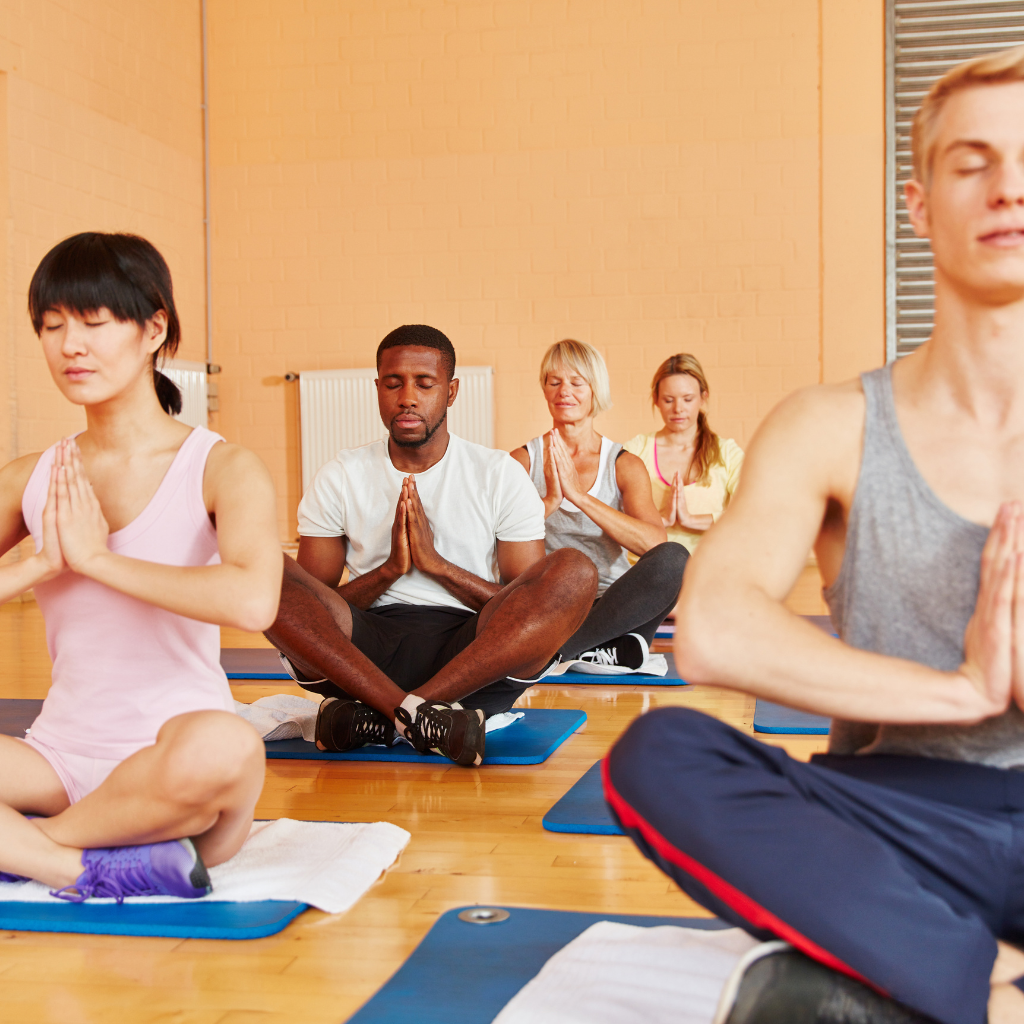In our fast-paced world, where stress often reigns supreme, the ancient practices of yoga and meditation emerge as beacons of hope for holistic health. These time-honored disciplines are not merely about stretching and sitting quietly; they are profound methods that intertwine physical, mental, and spiritual wellness. By exploring the science behind yoga and meditation, we can better understand how they enhance our overall well-being and empower us to lead healthier, more joyful lives.
Unraveling the Mysteries: How Yoga Enhances Well-Being
Yoga is often seen as a form of exercise, but at its core, it is a holistic practice that nurtures the body, mind, and spirit. Studies have shown that practicing yoga can lead to significant improvements in physical health, including enhanced flexibility, strength, and balance. The asanas, or poses, activate various muscle groups, promoting better posture and circulation. This physical engagement helps reduce chronic pain and mitigates the risks associated with sedentary lifestyles, making yoga a vital tool for modern health challenges.
But the benefits of yoga extend beyond the physical realm. The practice encourages mindfulness, as practitioners learn to focus their attention on the present moment. This mental engagement fosters a deeper connection with one’s body, enabling individuals to recognize and respond to their emotional states. Research indicates that yoga can help alleviate symptoms of anxiety and depression, promoting emotional resilience and stability. This dual impact on both the body and mind creates a comprehensive approach to well-being.
Moreover, yoga’s emphasis on breath control, or pranayama, plays a crucial role in enhancing overall health. By mastering controlled breathing techniques, practitioners can stimulate the parasympathetic nervous system, which promotes relaxation and reduces stress levels. This physiological response not only helps to calm the mind but also supports immune function and lowers blood pressure, contributing to a sense of tranquility and balance.
Ultimately, yoga serves as a sanctuary where individuals can cultivate self-awareness and personal growth. As practitioners dive deeper into their practice, they often discover a greater sense of purpose and connection to themselves and the world around them. This journey fosters resilience and well-being, solidifying yoga’s role as a transformative practice for holistic health.
Mind Meets Body: The Neuroscience of Meditation Magic
Meditation is often described as the art of being still, yet it is a dynamic practice that engages the brain in remarkable ways. Neuroscientific research reveals that meditation can lead to structural and functional changes in the brain, enhancing cognitive abilities and emotional regulation. Regular meditation practice stimulates the prefrontal cortex, the area associated with executive functions such as decision-making, attention, and self-control. This means that meditation not only calms the mind but also empowers individuals to navigate life’s challenges with clarity and focus.
In addition to bolstering cognitive function, meditation has been linked to increased gray matter density in regions of the brain related to emotional regulation. This change is particularly significant for individuals dealing with stress, anxiety, or trauma. By fostering a more resilient neural framework, meditation enables practitioners to respond to emotional triggers with a greater sense of equanimity. It’s as if meditation equips the mind with a soothing balm, allowing the individual to glide through turbulent waters with grace.
The benefits of meditation are not limited to the brain alone; they resonate throughout the entire body. The practice has been shown to reduce levels of the stress hormone cortisol, which, when chronically elevated, can lead to a range of health problems, including heart disease and digestive issues. By calming the mind, meditation creates a ripple effect on physical health, promoting relaxation and recovery. As we learn to quiet the noise of our thoughts, our bodies, too, can experience profound healing.
Meditation also encourages a deep connection to one’s self, fostering an inner landscape of peace and acceptance. This mindful exploration allows individuals to cultivate compassion, both for themselves and others. As practitioners learn to embrace their thoughts and emotions without judgment, they create space for personal growth and transformation. In this way, meditation becomes more than a practice; it becomes a pathway to living a balanced and joyful life.
Energize Your Spirit: The Benefits of a Holistic Approach
The juxtaposition of yoga and meditation offers a holistic approach to health that energizes the spirit and fosters overall well-being. By integrating movement and stillness, practitioners can experience a harmonious balance that promotes vitality and joy. This multifaceted approach encourages individuals to engage with their physical, mental, and emotional selves, recognizing that health is not merely the absence of illness but a vibrant state of being.
Yoga and meditation together create a powerful synergy that facilitates deeper insights and self-discovery. As individuals engage in yoga, they cultivate a stronger awareness of their bodies, which can enhance their meditation practice. This newfound awareness allows for a more profound experience of presence during meditation, where the practitioner can fully immerse themselves in the moment. Such integration fosters a sense of completeness and wholeness, energizing the spirit and inviting a sense of joy and fulfillment.
Additionally, a holistic approach facilitates community and connection, essential components of well-being. When individuals practice yoga and meditation together, they create a supportive environment that fosters relationships and encourages personal growth. This sense of belonging amplifies the positive effects of both practices, as communal support helps individuals stay motivated and accountable on their wellness journeys.
Moreover, adopting a holistic perspective allows individuals to tailor their practices to their unique needs, passions, and goals. Whether it’s exploring different yoga styles, experimenting with various meditation techniques, or integrating mindfulness into daily life, the opportunities for personalization are endless. This adaptability empowers practitioners to cultivate a practice that resonates with their spirit, leading to deeper satisfaction and a more joyful existence.
In Harmony: Connecting Breath, Body, and Blissful Health
At the heart of yoga and meditation lies the breath, a powerful thread that weaves together the body and mind. Breath awareness is a foundational element of both practices, allowing individuals to connect with their inner selves on a deeper level. When we focus on our breath, we anchor ourselves in the present moment, creating a sense of calm and clarity. This connection to the breath transforms our experiences, enhancing both yoga and meditation practices.
In yoga, breath is synchronized with movement, creating a flowing rhythm that enhances physical postures. This synergy not only promotes physical alignment but also encourages a mindful approach to each pose. As practitioners learn to breathe deeply and consciously, they cultivate a sense of ease and grace, allowing the body to open up and release tension. This mindful connection to breath transforms the yoga experience into a meditative journey, fostering serenity and bliss.
Similarly, in meditation, breath serves as an anchor for the wandering mind. By focusing on the rhythm of the breath, practitioners can gently guide their attention away from distractions and into a space of inner stillness. This practice of returning to the breath cultivates mindfulness, allowing individuals to observe their thoughts without attachment. As they become more adept at this practice, they discover a profound sense of peace that permeates their daily lives.
The interplay of breath, body, and mind is a dance that brings forth a deeper understanding of ourselves and our place in the world. As we cultivate this harmony through yoga and meditation, we invite joy, resilience, and a sense of fulfillment into our lives. With each conscious breath, we step closer to a state of blissful health, empowering us to embrace life with open hearts and minds.
In conclusion, the science behind yoga and meditation reveals a treasure trove of benefits that extend far beyond physical fitness. These practices offer a comprehensive approach to holistic health, nurturing the body, mind, and spirit. By unraveling the mysteries of yoga, exploring the neuroscience of meditation, embracing a holistic approach, and fostering harmony through breath, we unlock the potential for vibrant living. So, let’s roll out our mats, take a deep breath, and embark on this joyous journey toward wellness together!




